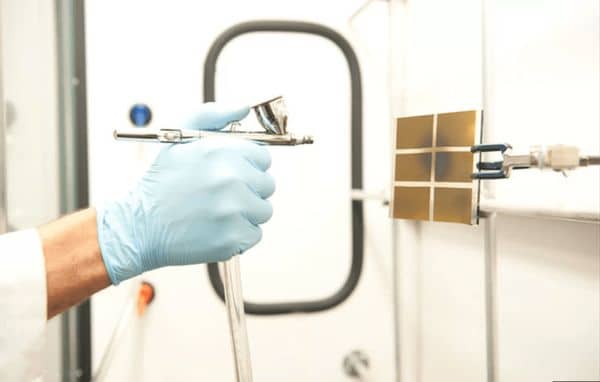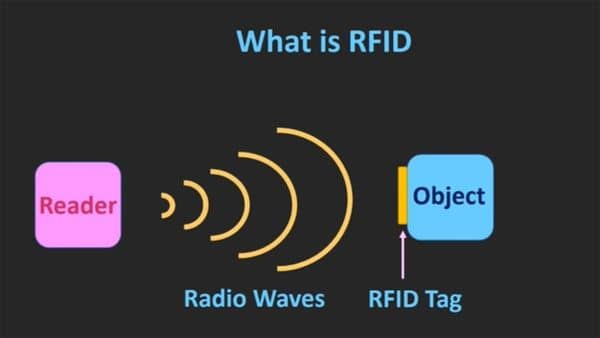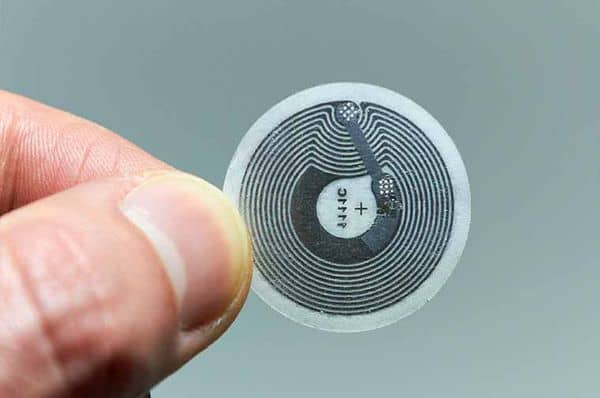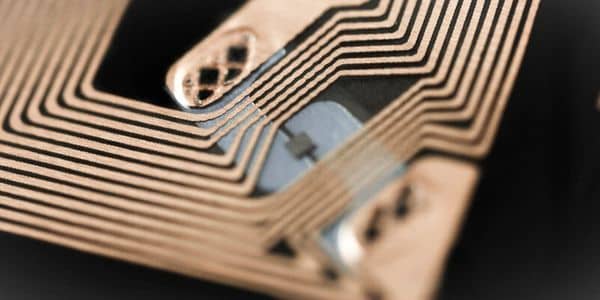
What Is Solar 3.0?
September 8, 2022
What Is Cloud Adjacency?
September 19, 2022Radio-frequency Identification technology or RFID technology could potentially help many different industries in a variety of ways. While this technology isn’t quite new, the innovative ways it’s being used today may give an insight as to how the technology will be used in the future. Let’s take a look at what radio-frequency identification technology is and how it could shape the future of various industries.

What Is Radio-Frequency Identification Technology?
Radio-Frequency identification is wireless communication incorporating the usage of electromagnetic or electrostatic coupling within the radio frequency portion of the electromagnetic spectrum. Almost just about any object is identified wirelessly by using data that is transmitted through radio waves.
An RFID technology system typically has three main parts, which include a scanning antenna, a transceiver, and a transponder. The RFID scanning antenna and transceiver are known as the RFID reader. This reader is a device connected to a network, which can be both portable and a permanent fixture. The RFID reader uses radio waves to broadcast or transfer signals to activate the specific tag. When the tag is activated, a wave is sent back to the antenna where the data is translated.
The RFID tag also houses the transponder. The range that the RFID tags can be read depends on various factors that include the kind of tag, reader, the frequency it uses, and the interference in the nearby location. Other tags and readers may also obstruct RFID tags in the vicinity. The stronger the RFID tag’s power source will affect its range.

What Are the Two Main Types of RFID Tags?
The two key types of RFID tags include Active RFID and Passive RFID. The main difference between the two types is their power source. An active RFID tag has its power source, typically a battery of some sort. A passive RFID only gets power from the reading antenna. This antenna has an electromagnetic wave that produces a current in the tag’s antenna. A semi-passive RFID tag combines the passive and active systems. The battery makes the circuitry run, and the communication is powered by the reader.
There are also three types of RFID systems, which include low-frequency RFID, high-frequency RFID, ultra-high frequency RFID, and microwave RFID. Low-frequency systems range between 30 kHz to 300 kHz but usually sit around 125 kHz. Low-Frequency RFID has a small range of transmission somewhere between a couple of inches to less than six feet.
A high-frequency RFID system has a range of 3 MHz to 30 MHz and is usually somewhere around 13.56 MHz. A high-frequency RFID system typically has an average range of several inches to several feet.
An ultra-high frequency RFID system ranges between 300 MHz to 960 MHz, and a normal frequency of 433 MHz. UHF RFID systems can be read more than 25 feet away. Lastly, Microwave RFID usually ranges between 2.45 GHz, which can be read more than 30 feet away.

What Is RFID Technology Being Used For?
The invention of RFID could be traced to various people in different decades. Some say that it was officially invented in 1983 by Charles Walton. Others believe it was Mario Cardullo in 1973. Some believe it was even invented even earlier in 1948 by Robert Watson-Watt.
RFID tags are an improvement on the traditional bar code that most people are familiar with. RFID technology allows its tags to be changed, updated, and locked. It gives the stores that use it an improved way to track their inventory for supplying and marketing purposes.
Because hardware costs for RFID technology have gone down, the technology can now be applied and used in various ways. It can be used to track pets and livestock, manage inventory, track equipment, and other assets, manage the logistics of a company’s supply chain, track vehicles, and customer service and loss control.
It can also help improve visibility and the distribution of the supply chain. It can help users gain access to controls in security circumstances. It can also help industries such as shipping, manufacturing, retail sales, and even health care.
RFID technology in a hospital setting can help with inventory control, equipment tracking, detecting patients when they get out of bed or detect a fall, employee tracking, making sure patients receive the proper medications and medical devices, preventing the distribution of counterfeit drugs and devices, monitor patients, and provide data for electronic medical record systems.

How Can RFID Tags Help Data Center Operations?
This technology can be applied in a myriad of ways and to innumerable industries. RFID tags can even help manage data center assets and operations. Data center managers and operators have a tremendous amount to manage and oversee. Managing inventory and hardware assets isn’t the main priority but is an important part of managing the data center operation for various data center regulations and data center compliance purposes.
RFID technology could potentially help manage all a data center’s assets including servers and routers. Doing this manually is a time-consuming task that can also result in mistakes due to human error. There is also the cost of time that is required to check all of the servers, routers, and databases. RFID technology could help with this manual task by using a handheld RFID reader to establish the data center’s needs. The data center manager and employee’s time could then be applied somewhere else.
Additionally, RFID technology could also help data centers with the same issues it’s helping within other industries including managing inventory, tracking equipment, and other assets, managing the logistics of a company’s supply chain, tracking vehicles, and customer service and loss control. RFID technology could also be used for security purposes.
Conclusion
RFID technology could be applied in many different ways and various industries. As the hardware for the technology continues to decrease in price—many organizations in many different industries could find new ways to use the technology to benefit their operations. Today, RFID technology can already help manage various aspects of many day-to-day business operations.

